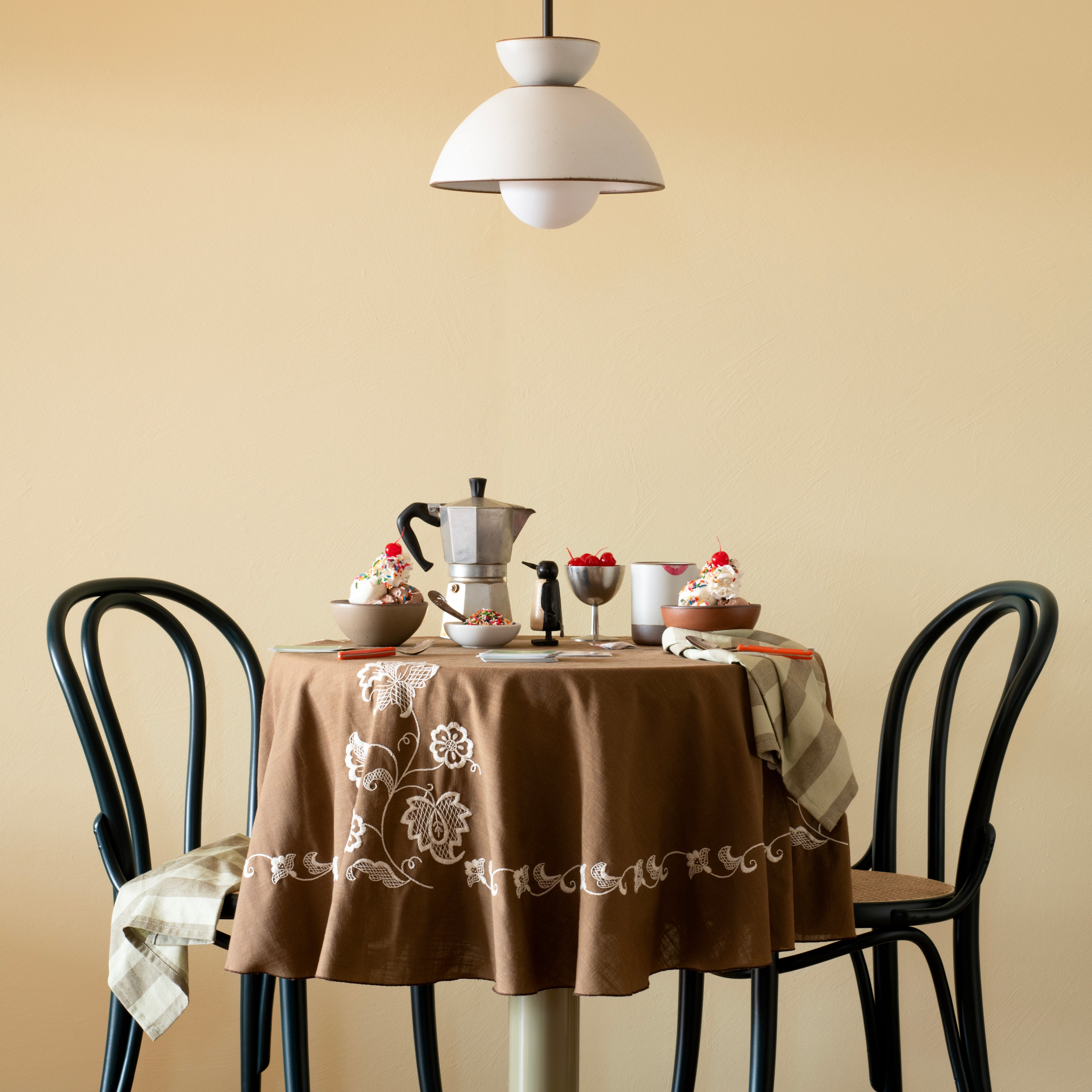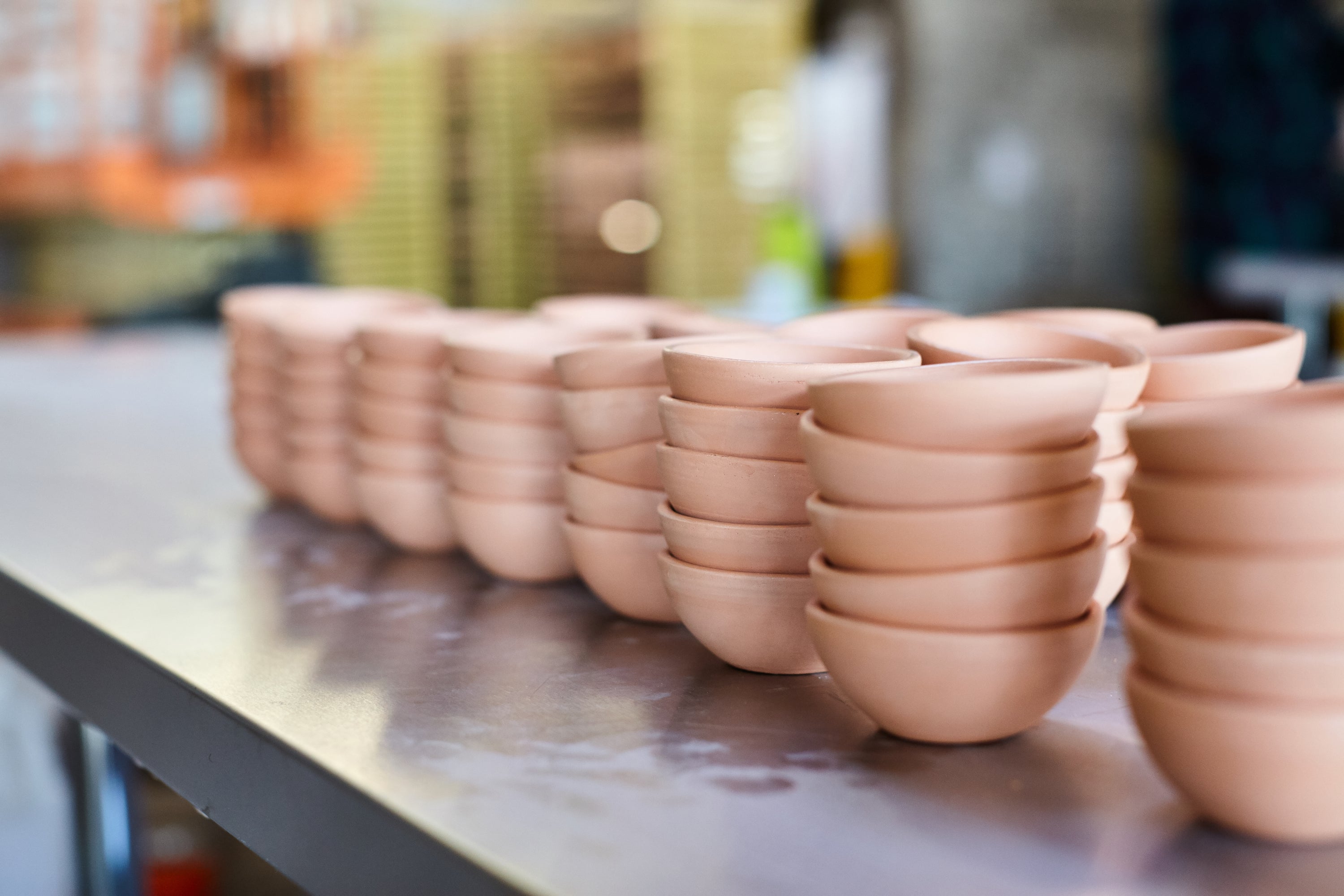Inside the Collaboration: Schoolhouse x East Fork

We started with a mission to preserve American manufacturing and purposeful design—and we’re not the only ones. We’ve long admired the folks at East Fork for their approach to crafting beautiful, functional, and long-lasting pottery, all in Asheville, North Carolina. That’s why we teamed up with them to develop a new line of lighting showcasing their stunning ceramics and glazes.
Many conversations and mockups later, we’ve created a collection that marries their unique artistry with our lighting know-how. To celebrate this special launch, we asked East Fork CEO Alex Matisse and our VP of Design Katie Elliott to share a bit about how the collaboration came to be.

AM: This is actually not East Fork’s first foray into lighting. Most people don’t know this, but the big shift for East Fork happened when an early collector commissioned me to make a large chandelier. That project was a certifiable disaster, but it did start us thinking about new approaches to what we made and how we made it.
KE: We have been in contact with East Fork for many years as two brands founded on a dedication to American manufacturing, dreaming of what a collaboration could look like. We'd have a call from time to time, but timing was never quite right until this past year.
AM: Schoolhouse is a company I have admired for a long time. It takes a certain tenacity and dedication to run a manufacturing operation and build a beloved brand at the same time. It’s not for the faint of heart, and we know a kindred spirit when we see one.
KE: I have long been a fan of East Fork. With both of our companies being founded on American manufacturing, there is a natural affinity and admiration. Their dedication to quality and functionality with a healthy dose of wit and joyfulness is something I strive to bring to Schoolhouse.

AM: The manufacturing process starts at the clay line, where raw materials are blended with water to mix the clay to our exact specifications. It is then brought to various machines throughout the factory where it is formed. There are several different processes we use to form our pottery. All of them involve a mold or die that we make in our mold shop.
When the piece is formed, the flashing edge (the bit of clay that remains at the parting seam of two molds) is trimmed off either by machine or by hand, depending on the form. It then heads to a large dryer where it is left until all moisture has left the clay.
Once dry, the pieces head to the first firing: the bisque fire. This begins the process of transforming the raw clay to stoneware. After this lower temperature firing, the pieces are ready to be glazed.
The pieces are dipped either by hand or automated dipping machine and loaded into the glaze kiln. The glaze kiln fires the pottery to 2350 degrees Fahrenheit in a reduction atmosphere, which is what imparts the variation and speckles in the surface of the glaze.

AM: Oftentimes there is a sterility and coldness that comes with the mass production of an object. Despite the fact that East Fork is made in a factory using many of the same forming processes that large scale ceramics factories use, our pottery retains warmth and character and individuality. One of the main reasons for this is the pots were designed by a potter. They began life on a potter's wheel and carry with them the design ethos that we have brought to all our work since the early days of firing a wood kiln. Each curve was refined through thousands of repetitions, the fullness of a rim was closely considered.

KE: The goal from the beginning was to reimagine East Fork’s existing molds to create lighting, celebrating the beautiful forms and glazes that East Fork is beloved for. We wanted to think of the lights as place settings suspended in the air, layering sizes and glazes as East Fork does so beautifully. We played around with many combinations and configurations until we got to the pairs of bowls in the final design. We chose a beautiful oil rubbed bronze finish for the metal components to mimic the rich depth of the ceramic glazes.
KE: This collection was such a treat to work on. The goal was to use their beautiful dishware in a new way to highlight the forms and glazes. I love the way East Fork celebrates building a collection over time, layering colors and sizes as that collection grows. That idea was used when designing the lighting. We layered colors and forms as you would set the table, but in this case to create new shapes to form the fixtures.

AM: When you walk around our factory, you see just how much handwork goes into the pottery we produce. The industrial process only gets us so far. Our employees are masters of their craft, and they take a tremendous amount of pride in what they make.
KE: So many people go into bringing any of our products to our customers. Our design process begins in a very collaborative way amongst the design team. But we quickly bring our proposals to our in-house engineering and sourcing teams to make sure our designs can be produced by our Portland factory, with a repeatable and high quality process. Once approved, many more hands play their part to bring this collection to our customers. It's special to think that even before our team begins creating these fixtures, the bowls have worked their way through the entire East Fork team in Asheville.
AM: I love Amaro paired with Black Mountain, it’s a classic combination. Add in some Panna Cotta dinnerware under the pendants, and you’ve got a perfect visual moment.
KE: Oh..that is so hard. Don't make me choose. They are all so beautiful, but the Morel and Black Mountain combination is particularly stunning.















